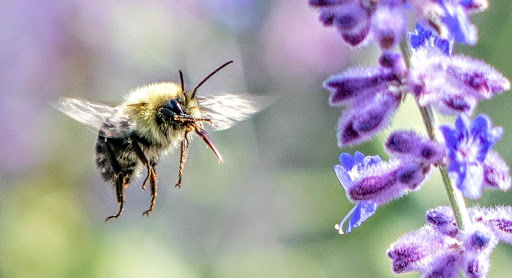Plants for Bees, Butterflies, Hummingbirds, and Beneficial Insects

It's easy to invite bees, butterflies, hummingbirds, and other welcomed winged visitors into the garden. Just provide the food, water, and shelter they need to feel at home. This is called habitat gardening, and it's a satisfying way to choose plants.
Plant list: > PLANTS THAT ATTRACT BEES
Plant list: > PLANTS THAT ATTRACT HUMMINGBIRDS
Plant list: > PLANTS THAT ATTRACT BUTTERFLIES
Plant list: > PLANTS THAT ATTRACT OTHER BENEFICIAL INSECTS
Gardens filled with pollinator-enticing flowers teem with life. Pollinators buzz, fly, and flit into the garden, picking up pollen from the male bits of a flower and dropping it onto the female bits of the same flower; that is, from the anthers to the stigmas. Pollinators help fertilize plants so they can produce seeds and fruit. Bees, butterflies and hummingbirds are probably the most familiar pollinators, but bats, beetles, moths, and a few flies and wasps also pollinate plants. Learn more about pollinators.
Beyond the pollinators: predators, parasites and pathogens, oh my!
Pollinators are familiar, but other insects are equally beneficial to the Earth-friendly landscape. Beetles, flies, parasites, spiders, and many other creatures are the natural enemies of the garden, keeping populations of undesirable pests in check and keeping the environment balanced and healthy. Learn more about biological control and tips for inviting natural enemies into the garden.
Habitat heroines
A few plants are notable for their ability to attract a significant number and variety of important wildlife, including pollinators and other beneficial insects. If you plant nothing else, choose a plant from this list and then sit back and enjoy the show.
• California native oaks (Quercus)
• Manzanita (Arctostaphylos)
• California lilac (Ceanothus)
• Sages (Salvia)
• Buckwheat (Eriogonum)
• Culinary herbs
About Pollination & Pollinators
..........................
California Native Plants & Why They Matter
